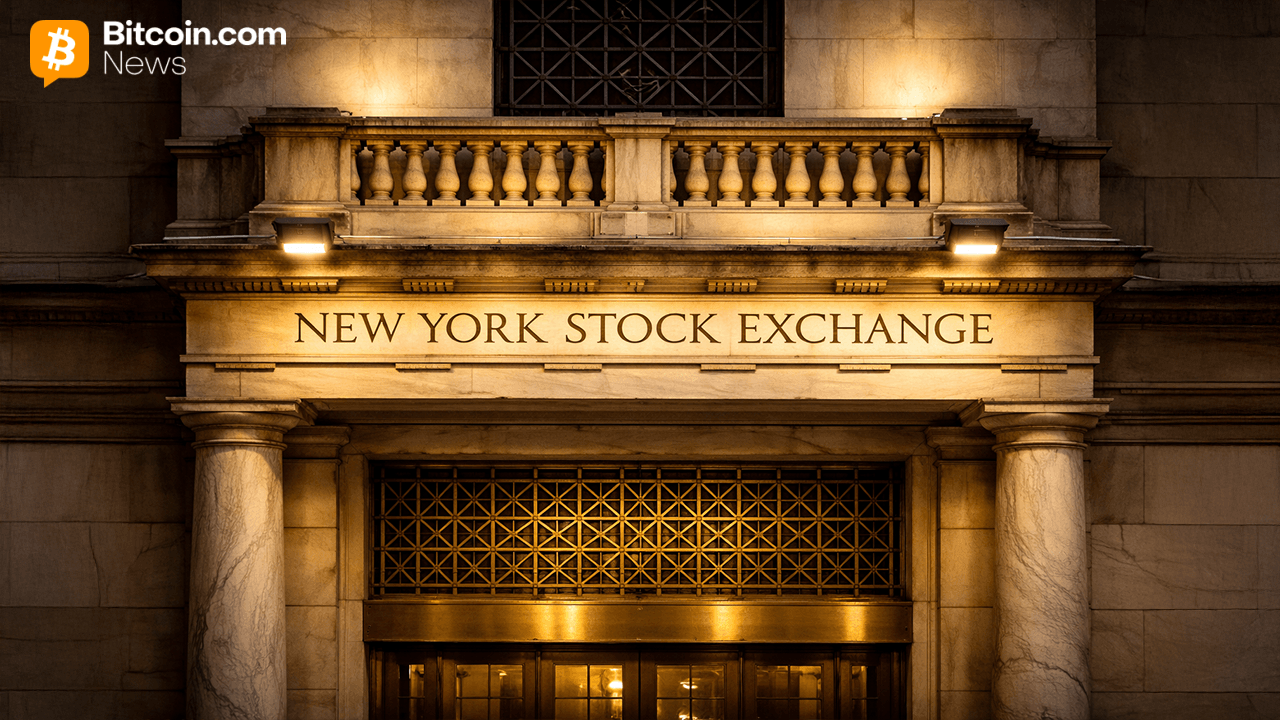Rainbet Partners Strengthens Crypto Affiliate Performance With High Conversions and
Analysis: Institutional BTC adoption is a ‘cyclical wave’, not a linear increase, says Saphira Group’s Dyment
(Originally posted on : CoinJournal: Latest Crypto News, Altcoin News and Cryptocurrency Comparison )
- Fund manager Jeff Dyment argues fears of fading institutional Bitcoin demand are overblown and miss the “bigger picture.”
- Institutional BTC buying is a “cyclical wave,” not a straight line, with 51 new corporate treasuries in H1 2025 alone.
- Options market data shows whales are building upside exposure, buying September $130K BTC calls.
In a market often fixated on short-term price swings, fund manager Jeff Dyment of Saphira Group is urging investors to take a step back and look at the bigger picture.
His thesis is simple yet powerful: recent data points suggesting that institutional Bitcoin buying is losing steam are missing the forest for the trees.
In a note shared with CoinDesk, Dyment argues that fears of dwindling institutional demand for Bitcoin are largely overblown, rooted in what he sees as narrow, short-term snapshots of the market.
He acknowledges the recent cooling in ETF and corporate purchases – for instance, Michael Saylor’s Strategy acquired just 16,000 BTC last month, a sharp decrease from its 171,000 BTC haul in December.
However, Dyment insists this is not a sign of decline, but rather a natural ebb in what he describes as a “cyclical wave” of institutional adoption.
“Institutional flows often come in waves rather than a steady linear increase,” Dyment wrote.
Short-term demand fluctuations in the spot market are minor ripples on what is, in fact, a rising tide of institutional engagement.
To support his argument, Dyment points to compelling data.
In the first half of 2025 alone, 51 new corporate Bitcoin treasuries were established, a figure equal to the total number established from 2018 to 2022 combined.
This represents a staggering 375% year-over-year increase in corporate Bitcoin buying.
Publicly traded companies now collectively hold 848,902 BTC, which accounts for approximately 4% of Bitcoin’s total supply.
In the second quarter of 2025 alone, these companies added 131,000 BTC to their balance sheets.
The ETF factor: a tsunami of regulated capital
Dyment also highlights the explosive growth of spot Bitcoin ETFs as further, undeniable evidence of deepening institutional participation.
BlackRock’s IBIT fund, which has already become the largest in the world, now holds an incredible 699,000 BTC, representing more than 3.3% of the total supply, after becoming the fastest-growing ETF in history.
Collectively, U.S. spot ETFs have captured approximately 1.25 million BTC, or roughly 6% of the total supply, in just 18 months since their launch, Dyment points out in his note.
This rapid accumulation by regulated investment vehicles underscores a structural shift in how capital is engaging with Bitcoin.
Whales Position for Upside as Market Awaits a Spark
Dyment’s thesis finds echoes in the derivatives market. In a recent note from QCP Capital, the Singapore-based fund observed that large “whale” investors are continuing to build exposure to upside risk.
They are reportedly snapping up September $130,000 BTC call options and holding significant positions in 115,000/140,000 call spreads, all bets on a future price increase.
“Vols remain pinned near historical lows, but a decisive breach of the $110K resistance could spark a renewed volatility bid,” QCP wrote in a Monday note.
So, while market bears may point to stagnant spot flows and the nearly empty mempool (the queue of unconfirmed Bitcoin transactions) as signs of market fatigue, Dyment argues that these are merely surface-level ripples.
Underneath, he contends, the institutional tide is rising. Wall Street, with its trillions upon trillions of dollars in regulated capital, is hungry for crypto exposure. It’s just not going to arrive all at once in a straight line.
Broader market movements provide context
The aformentioned analysis comes amidst a backdrop of volatile but resilient price action for Bitcoin and mixed signals from traditional markets.
-
BTC: Bitcoin fell 1.02% from July 6 at 22:00 to July 7 at 21:00, testing key support at $107,519.64 amid heavy selling, before staging a V-shaped recovery off $107,800. On-chain data showed strong support clusters at $106,738 and $98,566 held by 1.68 million addresses, according to CoinDesk Research’s technical analysis bot.
-
ETH: Ethereum rose 1.67% amid volatile trading, swinging nearly 3% between $2,529 and $2,604, as support at $2,530 held firm. Institutional inflows topped $1.1 billion, and above-average volume marked both the surge and subsequent sell-off.
-
Gold: Gold dipped on a stronger dollar but rebounded on tariff-driven safe-haven demand, with central bank buying and de-dollarization fueling forecasts of a rally toward $4,000.
-
S&P 500: Stocks fell on Monday as President Trump announced new tariffs on imports from seven countries, sending the S&P 500 down 0.79% to 6,229.98.
-
Nikkei 225: Asia-Pacific markets mostly rose despite President Trump announcing steep U.S. tariffs on 14 trading partners, with Japan’s Nikkei 225 up 0.36% as duties of up to 40% were outlined for countries including South Korea, Indonesia, and Thailand.








 Bitcoin
Bitcoin  Ethereum
Ethereum  Tether
Tether  XRP
XRP  USDC
USDC  TRON
TRON  Lido Staked Ether
Lido Staked Ether  Dogecoin
Dogecoin  Figure Heloc
Figure Heloc  Cardano
Cardano  WhiteBIT Coin
WhiteBIT Coin  Bitcoin Cash
Bitcoin Cash  Wrapped stETH
Wrapped stETH  Wrapped Bitcoin
Wrapped Bitcoin  USDS
USDS  Binance Bridged USDT (BNB Smart Chain)
Binance Bridged USDT (BNB Smart Chain)  Wrapped eETH
Wrapped eETH  Chainlink
Chainlink  Monero
Monero  WETH
WETH  Stellar
Stellar  Ethena USDe
Ethena USDe  Zcash
Zcash  Coinbase Wrapped BTC
Coinbase Wrapped BTC  Hyperliquid
Hyperliquid  LEO Token
LEO Token  Litecoin
Litecoin  Sui
Sui  Avalanche
Avalanche  sUSDS
sUSDS  Hedera
Hedera  Dai
Dai  USDT0
USDT0  Shiba Inu
Shiba Inu  PayPal USD
PayPal USD  Mantle
Mantle  Toncoin
Toncoin  Cronos
Cronos  Ethena Staked USDe
Ethena Staked USDe  World Liberty Financial
World Liberty Financial  Uniswap
Uniswap  Polkadot
Polkadot  Canton
Canton  USD1
USD1  MemeCore
MemeCore  Aave
Aave  Rain
Rain  Bitget Token
Bitget Token  Tether Gold
Tether Gold  Falcon USD
Falcon USD  OKB
OKB  Bittensor
Bittensor  NEAR Protocol
NEAR Protocol  Ethereum Classic
Ethereum Classic  BlackRock USD Institutional Digital Liquidity Fund
BlackRock USD Institutional Digital Liquidity Fund  Binance-Peg WETH
Binance-Peg WETH  Pi Network
Pi Network  Jito Staked SOL
Jito Staked SOL  syrupUSDC
syrupUSDC  Aster
Aster  Pepe
Pepe  Internet Computer
Internet Computer  HTX DAO
HTX DAO  PAX Gold
PAX Gold  Ethena
Ethena  Jupiter Perpetuals Liquidity Provider Token
Jupiter Perpetuals Liquidity Provider Token  Wrapped SOL
Wrapped SOL  Global Dollar
Global Dollar  Circle USYC
Circle USYC  KuCoin
KuCoin  Ripple USD
Ripple USD  BFUSD
BFUSD  Sky
Sky  syrupUSDT
syrupUSDT  Binance Bridged USDC (BNB Smart Chain)
Binance Bridged USDC (BNB Smart Chain)  Worldcoin
Worldcoin  Ondo
Ondo  Rocket Pool ETH
Rocket Pool ETH  Gate
Gate  Wrapped BNB
Wrapped BNB  Pump.fun
Pump.fun  Binance Staked SOL
Binance Staked SOL  POL (ex-MATIC)
POL (ex-MATIC)  Aptos
Aptos  Quant
Quant  Midnight
Midnight  Arbitrum
Arbitrum  Official Trump
Official Trump  Liquid Staked ETH
Liquid Staked ETH  Solv Protocol BTC
Solv Protocol BTC  Algorand
Algorand  Function FBTC
Function FBTC  Lombard Staked BTC
Lombard Staked BTC  Cosmos Hub
Cosmos Hub  NEXO
NEXO